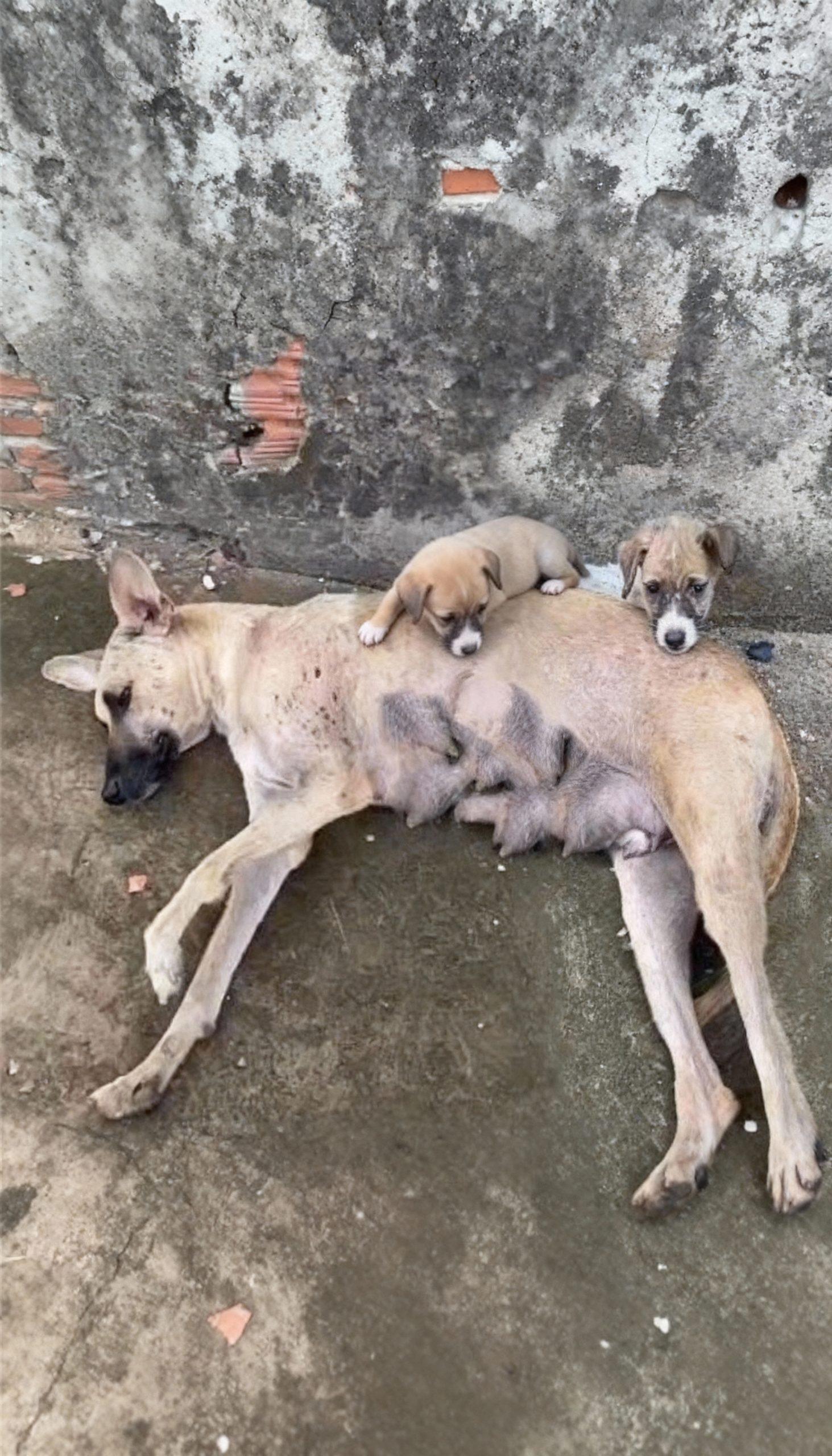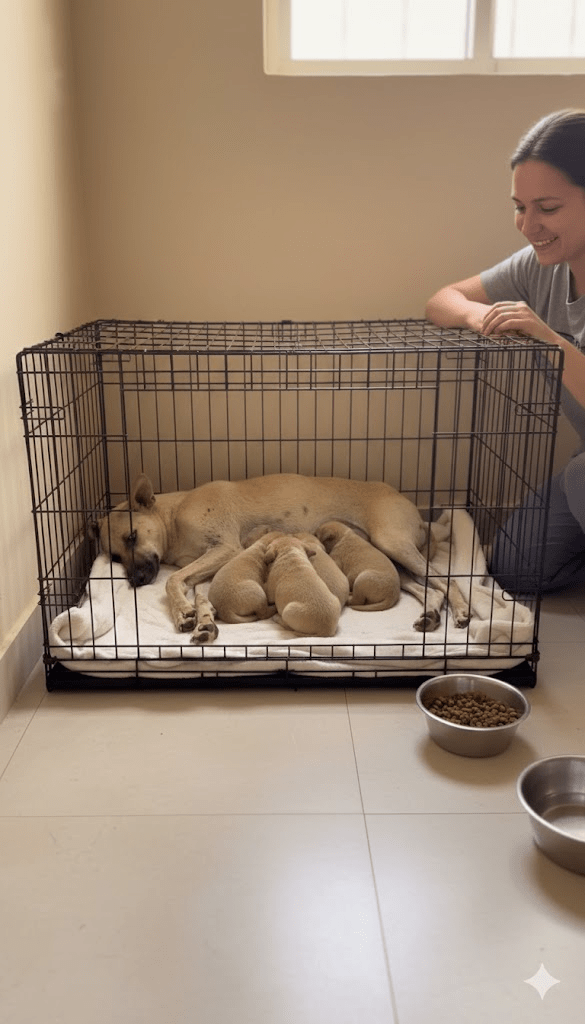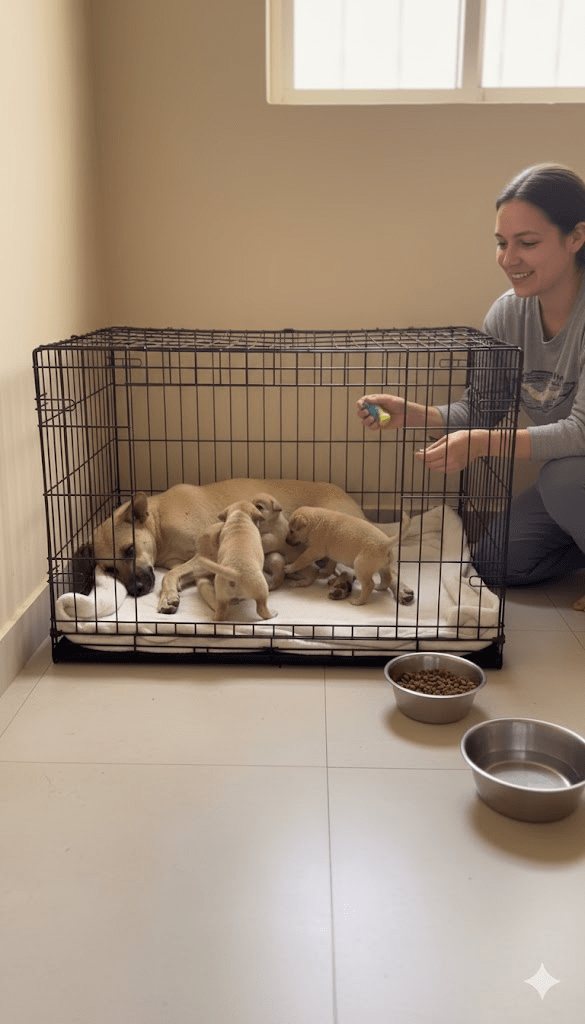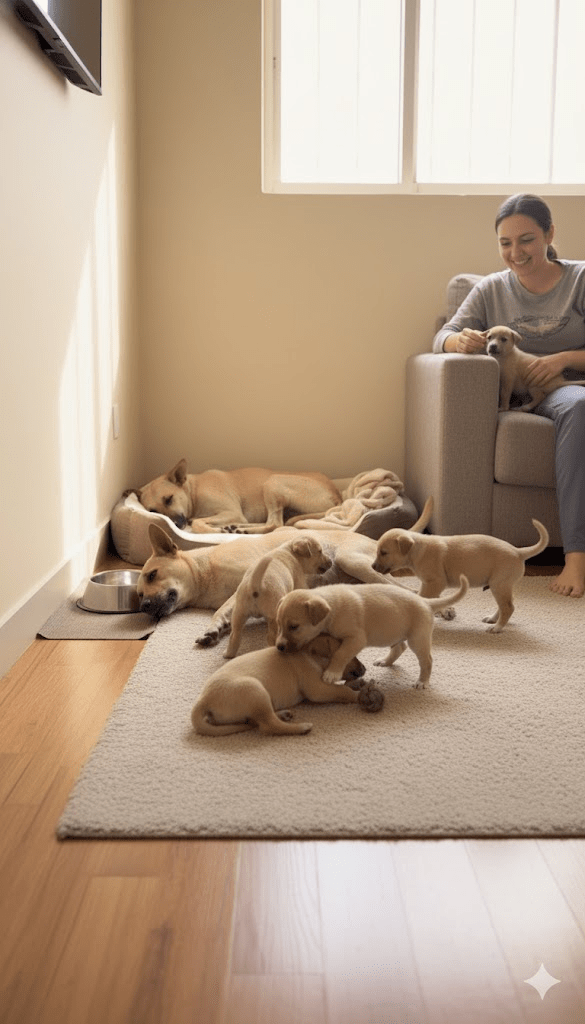The image before us tells a poignant story, one that resonates with the raw, unfiltered essence of survival and the unbreakable bond of motherhood. It depicts a street dog, her emaciated frame a testament to hardship, lying on a rough, cracked concrete surface. Her ribs are visible, and her fur is matted, bearing the marks of a life lived without comfort or consistent nourishment. Clinging to her, or rather, nestled on and around her, are several tiny puppies. Two of them, barely more than a handful, are perched on her back, their innocent eyes looking out at a world that has offered them little so far. Other small forms can be vaguely discerned near her belly, suggesting more offspring. The backdrop is equally stark: a weathered, discolored wall, possibly brick or stucco, shows signs of neglect and decay, echoing the harsh environment in which this family exists. There’s a palpable sense of vulnerability, a silent plea in the scene, yet beneath it all, there’s the undeniable strength of a mother, giving everything she has to sustain her young. This photograph is more than just a snapshot; it’s a window into the daily realities faced by countless stray animals, a powerful visual narrative of resilience, love, and the urgent need for compassion.

The mother dog’s posture speaks volumes. She lies exposed, her body a shield for her vulnerable offspring, even as her own strength wanes. This selfless devotion is a universal theme, transcending species, yet in the context of street animals, it carries an even heavier weight. With no guaranteed shelter, no consistent food source, and constant exposure to the elements and potential dangers, every day is a battle for survival. The fact that she has managed to birth and nurture her litter in such conditions is a testament to an innate, primal drive to protect and preserve her lineage. Her tired eyes and bony frame highlight the immense energy expenditure required to produce milk and provide warmth, a sacrifice she makes willingly, despite her own profound needs.

The vulnerability of the puppies is equally striking. Their small size makes them incredibly susceptible to disease, hunger, and environmental hazards. They huddle close to their mother, seeking warmth and comfort, their existence entirely dependent on her ability to provide. The sight of them on her back, in an almost playful yet precarious manner, underscores their innocence and unawareness of the harsh realities surrounding them. They are, for now, protected by her presence, but their future is uncertain, hanging by a thread in a world that often overlooks the plight of its most defenseless creatures.

This scenario is not an isolated incident but a pervasive issue in many urban and rural areas globally. Stray animal populations, often unchecked and lacking access to veterinary care, lead to cycles of suffering. Female dogs can have multiple litters per year, quickly exacerbating the problem. Each new litter faces the same, if not more, challenges as their parents, perpetuating a cycle of hunger, disease, and exposure. This image serves as a potent reminder of the consequences of uncontrolled breeding and the broader societal implications of neglecting animal welfare.

Yet, amidst this stark reality, there is hope. The narrative of street animals is not solely one of despair. It is also a narrative of immense resilience, of the capacity for survival against overwhelming odds, and of the profound impact human intervention can have. Organizations dedicated to animal rescue and welfare work tirelessly to address these issues, often starting with individual cases just like the one captured in this photograph. They provide immediate relief – food, water, medical attention – and long-term solutions, such as spaying and neutering programs, to break the cycle of homelessness.

Community involvement is crucial. Simple acts of kindness, such as providing a bowl of water or leaving out food, can make a significant difference in the lives of these animals. More organized efforts, like volunteering at shelters, fostering animals, or donating to rescue organizations, contribute to a larger, more impactful solution. The awareness generated by images like this can inspire empathy and galvanize action, reminding us that these creatures, though voiceless, are deserving of our care and respect.







